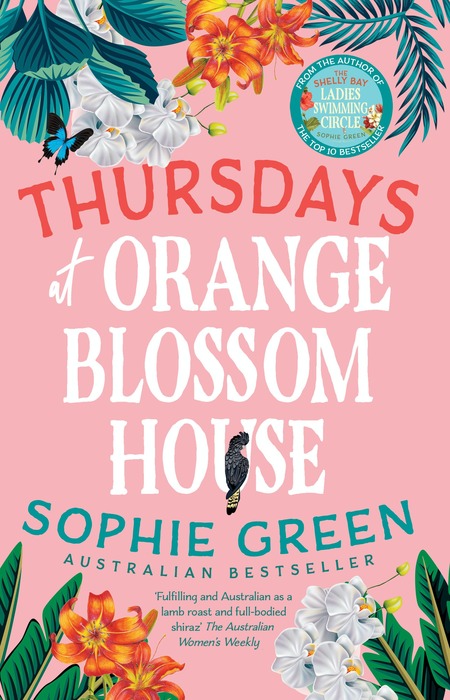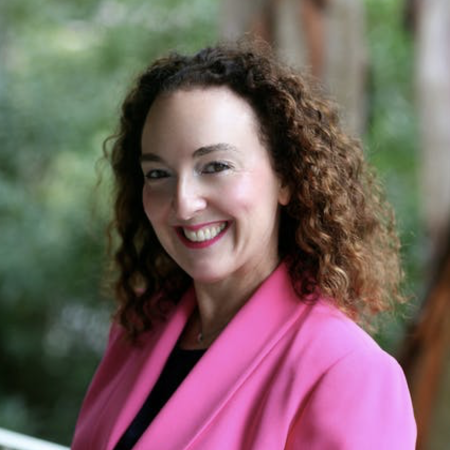We like to think in this hyperconnected digital age of ours that we are closer than ever to those around us, and even those far, far away.
And while there is some intimacy and value that comes from trading thoughts on everything from politics to cake recipes on social media platforms, the truth is we are not as connected to other people as we might like to think.
That lack of meaningful real world connection becomes abundantly clear in the gentle but emotionally powerful surrounds of Sophie Green’s Thursdays at Orange Blossom House, as does, thankfully, moving and restorative assurance that if we do take the steps needed to reconnect with people, that the results can be gloriously transformative indeed.
The novel, set in 1993-1994 in Far North Queensland, centres on three quite different woman, all of whom shares a heavy need to find their tribe and to make friends who will drop everything to be there for each other through thick and thin.
They just don’t know it yet; well, deep down they do, but like most of us, they are so busy with the overwhelming day-to-day business of life that having the time, or inclination (that can be painful) to dig into the far reaches of their psyches is something neither of them has ever done.
But as this wholly beautiful book begins, all three women are ready to make the connections they are yet aware they need and all do it through yoga classes on a Thursday at Orange Blossom House, where the ebulliently insightful Sandrine seems to have a near-magical ability to know what ails them and to get them on the path to real connection and healing.
“She’s [Grace Maud] seen that pattern in her own life: allowing something to grow, then doing something dramatic to pare it back. Or to destroy it. Perhaps it suggests that she’s heartless. Or perhaps it’s all she knows. After a childhood spent observing the pattern, it’s in her blood and her marrow and the very gristle of her. She has known for a long time now that the way we grow up leaves an imprint on us that is both profound and invisible. Our own individual system of ley lines. And she has spent her lifetime wondering if all we do is follow those lines without knowing why, our course plotted before we are even conscious of it.” (P. 9)
Grace Maud is a 74-year-old woman who has moved into Cairns to live after handing over the running of the cane farm she still owns to her only child Tom, who has grand and exciting for the property that has been in the family for generations.
While she presents a prickly, no-nonsense exterior, which partly but doesn’t wholly the vulnerable, loving person within, Grace Maud is ready, though she doesn’t know it yet to open herself up to new friendships with carer Cecilia and the two women with whom she often shares floor space during yoga classes.
Those women are Patricia, a single teacher in her 40s who has left her dreams, such as they were, behind in Sydney to come back to her hometown to care for her ageing parents, one of whom, her mother, is rapidly succumbing to dementia.
While she loves her parents, her relationship with them is complicated, as is the fact that a fellow teacher, kind, tender and gregarious PE instructor Dennis, may like in more than a professional capacity.
Often sitting next to her on a yoga mat is Dorothy, a bright, caring café owner (with her delightful husband Frederick) who is weighed down to an almost suffocating degree by her unsuccessful attempts to fall pregnant.
All three of these women decide to attend yoga classes on a Thursday for wholly different reasons, but they all come to realise that, quite apart from Sandrine’s sage instruction, that what they need most is each other.
They also need, and this is true of any of us, is someone else, or multiple someones, to have their back, to listen and respond and love unconditionally and to help them step away from the self-woven emotional cocoons which once protected them but now are stifling any possibility of reengaging with life and other people.
One of the great delights of Thursdays at Orange Blossom House is the way in which Green writes about loneliness and social isolation in such an accessibly universal way, in language that is far from twee and feels grounded and authentic, that you can feel how desperately these women need to connect, even if they are unaware of the true extent of their estrangement from the normal course of human interaction.
Green takes real care in unveiling the lives of three remarkably engaging characters, all of whom go on a journey that is buoyantly positive but which never feels contrived or emotionally manipulative.
In fact, while there is a real joy in reading stories, any stories, about people coming out of the fog of social dislocation and emotional loss, that joy is enhanced all the more when the people at the centre of the narrative feel so real and well-rounded and the arc they travel from hidden away to open and engaged feels so warmly possible,
“There is something else her [Patricia] body is telling her, though, and she can’t push it aside. It’s a sensation in her heart centre. A lightness. Joy, even.
This is something else Sandrine promised – or threatened – would happen if they stayed on the mat long enough: their hearts would open.” (P. 314)
Certainly many books in the burgeoning genre Thursdays at Orange Blossom House sit in a place that is more wish fulfillment than anything real and tangible.
We all wish for turnarounds like these books present, and yes, they are a tonic for the sad, weary and lonely soul, but there is a sense all too often that nothing like could ever happen out in the dislocated confines of the real world.
When you read Thursdays at Orange Blossom House with its raw, honest but supportive dialogue and its touching exploration of the loss of emotional connection and its slow but profoundly good resurrection, you not only feel renewed in spirit but reassured by the fact that this could actually happen to people.
Grace Maud, Patricia and Dorothy all feel wonderfully, thrillingly real and so going on their yoga-fuelled journey feels like walking alongside people you might actually know or could be yourself.
It’s this muscularity of human experience that adds to so much to the reading of Thursdays at Orange Blossom House, a heart-liftingly good novel that knows how easy it is to wall yourself off from the world at large and the people who populate it, and which understands why that might seem like the best and safest option.
But even better, it speaks in tones soft and transformatively powerful, about how different life can be when you open up and remember that being intimately connected to others can change you for the lastingly good in ways you never even see coming.

